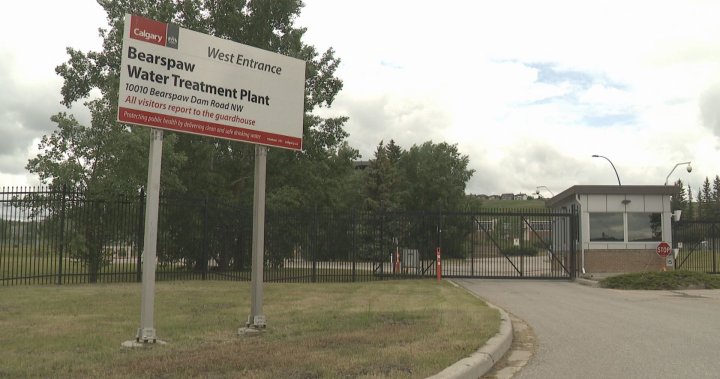Calgary officials are currently facing a crisis as a catastrophic feeder main break has immobilized the flow of 60 per cent of the city’s treated water from the Bearspaw Water Treatment Plant. In response to this, Mayor Jyoti Gondek has mentioned exploring alternative ways to move water, such as using above-ground pipes temporarily. However, experts like Tricia Stadnyk have raised concerns about the reliability and safety of this solution, as any compromise in the pipe could lead to contamination of the drinking water supply. Stadnyk, who is a Canada Research Chair in hydrologic modelling, explained that the pressure in the system makes replacing the feeder main a complex task.
The city has been working with the private sector to find solutions to the water distribution issue, including engaging with oil and gas companies to leverage their experiences with pipeline integrity. Although there are valuable lessons to be learned from other industries, such as the importance of maintaining infrastructure, Kerry Black, an assistant professor at the Schulich School of Engineering, noted that public water infrastructure is not as lucrative as other sectors like oil and gas. Despite public criticism over the expected length of time for repairs, Stadnyk emphasized the importance of ensuring the safety and quality of drinking water, which requires thorough diligence and processes like flushing the system to remove any possible contaminants.
One of the challenges faced by Calgary officials is the limited capacity of the Glenmore Water Treatment Plant in southwest Calgary to meet the city’s water demand. As a result, exploring alternative solutions for moving water, such as using an interim overland option as a backup plan, has become necessary during this crisis. The city has completed the inspection of the remaining 300 meters of the pipe and found no new issues, but the full repair is still expected to take three to five weeks to complete. Stadnyk emphasized the importance of maintaining high-quality drinking water standards in Canada, which involves ensuring the system is not compromised in any way to prevent potential contamination.
The overland solution being considered by Calgary officials comes with its own set of challenges, including the potential risks of contamination and the need for additional safeguards to protect the drinking water supply. Stadnyk highlighted the health and safety implications of using above-ground pipes for transporting drinking water, emphasizing the need for thorough inspections and precautions to prevent any compromises in the system. Despite the complexities involved in finding alternative ways to move water from the Bearspaw Water Treatment Plant, the city is actively exploring different options to address the current water distribution crisis and ensure the safety of Calgary residents.
The collaboration between the city and the private sector, particularly with oil and gas companies, highlights the importance of seeking expertise from various industries to find innovative solutions to complex challenges like the feeder main break in Calgary. By sharing knowledge and experiences, different sectors can collaborate to improve the integrity and reliability of critical infrastructure like water distribution systems. Black noted the financial constraints faced by public water infrastructure projects, emphasizing the need for cost-effective solutions that prioritize public health and safety. Despite the challenges and limitations, Calgary is committed to addressing the water distribution issue and ensuring the long-term resilience of its water infrastructure for the benefit of the community.
In conclusion, the ongoing efforts by Calgary officials to address the catastrophic feeder main break and ensure the continuity of the city’s water supply demonstrate a proactive approach to managing crises and finding creative solutions. By engaging with experts from various sectors and exploring alternative ways to move water, the city is taking steps to mitigate the impact of the current water distribution issue. Stadnyk’s emphasis on maintaining high-quality drinking water standards and the importance of thorough diligence in ensuring the safety of the water supply underscores the city’s commitment to prioritizing public health and safety. Despite the challenges and complexities involved, Calgary’s dedication to addressing the water distribution crisis reflects a resilient and forward-thinking approach to safeguarding essential services for its residents.


